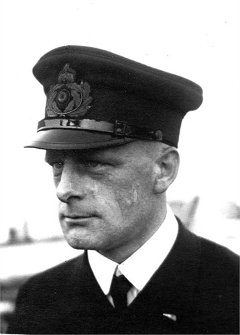Decorations
Military Merit Cross
Militärverdienstkreuz
| The Military Merit Cross (German: Militärverdienstkreuz) was a decoration of the Empire of Austria and, after the establishment of the Dual Monarchy in 1867, the Empire of Austria-Hungary. It was first established on October 22, 1849 and underwent several revisions to its design and award criteria over the years of its existence. It became obsolete in 1918 with the fall of the Austro-Hungarian Empire. The Military Merit Cross was established on October 22, 1849 by Emperor Franz Joseph I, based on the recommendation of Field Marshal Count Radetzky. It was to be awarded to officers who had performed especially praiseworthy service before the enemy in wartime, or outstanding service in peacetime, and was originally established in only one class. The first awards were made to all officers who had served under Count Radetzky in the Italian campaigns of 1848-49, especially the Battle of Custoza in 1848 and the Battle of Novara in 1849. Just under 1,500 awards were made in 1849 and 1850, mainly to these officers. After this, the Military Merit Cross was awarded sparingly except during the Austro-Sardinian War of 1859, the German-Danish War of 1864, the Austro-Prussian War of 1866, the Russo-Turkish War of 1877–1878 (when Austria occupied Bosnia-Herzegovina), and the Boxer Rebellion. The first major revision of the Military Merit Cross came on January 12, 1860, when the War Decoration (Kriegsdekoration) was created. This was a green laurel wreath (Lorbeerkranz) between the arms of the cross, which was awarded for special deeds before the enemy ("für besondere Taten vor dem Feind"). Henceforth (and retroactively), wartime awards would be distinguished from peacetime awards by the presence of the wreath. The next significant change occurred on September 23, 1914, shortly after the outbreak of World War I. The Military Merit Cross was divided into three classes. The previous Military Merit Cross, a breast decoration worn on a trifold ribbon, became the 3rd Class. A neck badge was created as the 2nd Class and a pinback cross became the new 1st Class. This classification made the Military Merit Cross effectively an order, with the 3rd Class equivalent to a knight's badge, the 2nd Class equivalent to a commander's badge, and the 1st Class equivalent to the breast star of an order. A recipient of an earlier Military Merit Cross without the War Decoration, if awarded the Military Merit Cross with the War Decoration, could wear both, and a recipient of a higher class could continue to wear the lower class. The statutes allowed for all three classes to be awarded with or without the War Decoration, but given the wartime situation, most awards were with the War Decoration. Another change occurred on December 13, 1916, when swords were authorized for awards for bravery. These were crossed swords on the ribbon for the 3rd Class, and between the arms of the cross for the 1st and 2nd Class. On August 1, 1917, second and third awards of the 3rd Class were authorized, signified by one or two 6-mm wide silver clasps on the ribbon. On February 8, 1918, a second award of the 2nd Class was also authorized. Until World War I, awards to non-Austro-Hungarian officers were uncommon. During World War I, awards to officers of Austria-Hungary’s allies became far more common, especially to Germans serving alongside Austro-Hungarians or serving in regiments of which the Emperor was the honorary chief. |
49 officers decorated with Military Merit Cross (Militärverdienstkreuz) located.
Note: This listing is still being compiled and some recipients might be missing.


